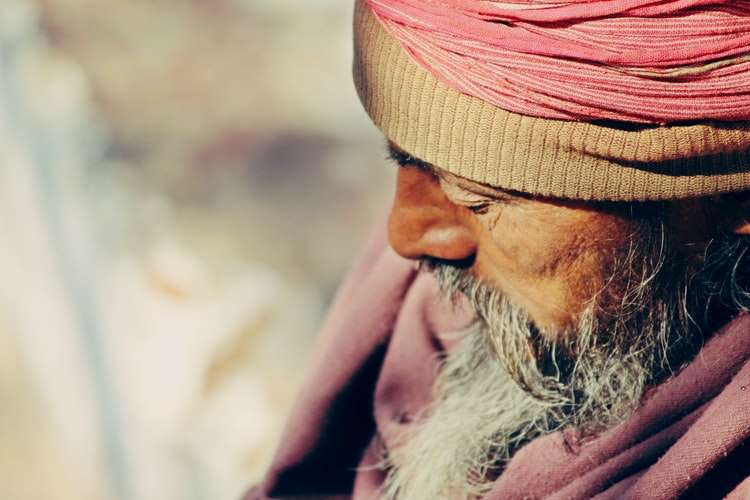
Elder abuse is an often-hidden problem and includes psychological, financial, social, physical, and sexual abuse, and the justice system is not adequately equipped to deal with the situation. The World Health Organisation defines elder abuse as a single or repeated act, or lack of appropriate action, occurring within any relationship where there is an expectation of trust which causes harm or distress to an older person.
WHO estimates that a sixth of people aged over 60 suffer from abuse, globally. However, the actual number might be much higher as violence, abuse and neglect of older people remain underreported as the data is not systematically collected in many countries. Currently, there are no official national statistics relating to the prevalence and incidence of elder abuse. In its resolution 66/127, the United Nations General Assembly has designated June 15 as the World Elder Abuse Awareness Day. On the day, the world voices its opposition to the abuse and sufferings inflicted on older people.
Rates of elder abuse are high in nursing homes and long-term care facilities, with two thirds of the staff reporting that they have committed abuse in the past year. Elder abuse can lead to serious physical injuries and long-term psychological consequences. In addition, elder abuse is predicted to increase as many countries are experiencing rapid ageing of population. The global population of people aged 60 and older will more than double from 900 million in 2015 to about 2 billion in 2050.
READ I G7 to launch ‘green belt and road’ plan to counter China
Covid-19 impact on elder abuse
Covid-19 has worsened the situation for older people. Ageism, discrimination on the grounds of age, is prevalent in most societies. Distressing reports of instances of abuse and neglect of older persons, particularly in long-term care institutions and in the community where the majority of older persons live, are reported. Older persons are at high risk of serious illness, deprivation of timely diagnosis, care and treatment, and untimely mortality. In the context of Covid-19, they are also discriminated against, stigmatised and subjected to multiple violations of human rights.
The UN Secretary-General in his 2020 Policy Brief: The Impact of Covid-19 on Older Persons, observed that the lack of adequate legislation at the national level to protect the rights of older people and the absence of a dedicated internationally agreed legal framework may have contributed to the inadequate responses to the Covid-19 crisis and that these gaps must be filled.
Claudia Mahler, an independent expert on the human rights of older persons, noted in her report to the 75th session of the United Nations General Assembly, “Efforts to protect older persons should not overlook the multiple roles older persons play in society, including as caregivers, volunteers and community leaders. It is essential to be aware of and embrace the full diversity of persons in the older persons’ category.” Rosa Kornfeld-Matte, another expert on the human rights of older persons, in her first report to the General Assembly (A/75/205), has highlighted the inadequate legal framework governing health rights, an adequate standard of living, palliative care and age discrimination.
READ I Foreign exchange reserves surpass $600 bn; What does it mean to Indian economy
Types of elder abuse
According to WHO estimates, most elder abuse victims are female, whereas the majority of the perpetrators are male. Overall, adult children are most often the perpetrators of elder abuse, followed by other family members and spouses. Unfortunately, institutional abuse of the elderly (i.e., hospitals, elderly care homes) is also becoming a significant concern, mainly since more families cannot provide appropriate care for the elderly at home. The US National Centre on Elder Abuse identified seven different types of elder abuse. These include physical abuse, sexual abuse, emotional abuse, financial/material exploitation, neglect, abandonment, and self-neglect.
Physical abuse includes physical force that may result in bodily injury, physical pain, or impairment. This also may consist of unreasonable use of force to restrain the elderly in care homes. Some physical signs of abuse include broken bones, bruises, burns, dislocated joints, signs of self-treated injuries, sprains, sudden unexplained hair loss and tooth loss.
Sexual abuse is the non-consensual sexual contact of any kind with an older adult. The typical signs and indicators of sexual abuse against the elderly can be either behavioural or physical. They include sustaining a pelvic injury, having problems walking or sitting, developing a sexually transmitted disease or STD, torn, bloody or stained underwear, bruises of the genitals or inner thigh, bleeding from the anus or genitals, irritation or pain of the anus or genitals, panic attacks, signs of post-traumatic stress disorder (PTSD), symptoms of agitation, and social or emotional withdrawal from others.
In a study published in the Journal of Abuse, about 12% of elderly sexual abuse victims sustained their assault within their places of residence. About 15% of elders who are sexually abused suffered their assault in the home of the sex offender.
Emotional abuse: Infliction of anguish, pain, or distress through verbal or non-verbal acts. Emotional abuse occurs when an older person is yelled at, threatened, or belittled. In addition, emotional abuse takes place when a more senior person suffers harm through insults, yelling, or verbal harassment. Emotional abuse may be one of the most common forms of elder mistreatment. Nearly a third of nursing home staff members admitted to psychologically abusing residents, according to a 2020 study from the World Health Organization.
Financial/material exploitation: Illegal or improper use of an elder’s funds, property, or assets. Neglect, refusal, or failure to fulfil any part of a person’s obligations or duties to an older adult.
Abandonment: Desertion of an older adult by an individual who has physical custody of the elder or a person who has assumed responsibility for providing care to the elder. And self-neglect is the behaviour of an older adult that threaten his/ her health or safety. A study by World Health Organization in 2017 estimated that globally 16% of people aged 60 years and older face elder abuse. The prevalence estimate was 11.6% for psychological abuse, 6.8% for financial abuse, 4.2% for neglect, 2.6% for physical abuse, 0.9% for sexual abuse in community settings.
Often, national laws and legal processes do not serve the needs of older persons who may seek recourse. Older persons who have experienced situations of violence, abuse and neglect face multiple barriers in accessing judicial remedies such as issues of accessibility, reasonable accommodation, affordability, excessive delays and backlogs in judicial processes, the impact of digitalisation, cultural norms, gender bias, discrimination, and entrenched ageism in policy, standards and practices.
Access to justice impacts older persons’ ability to exercise all their human rights, including the right to health, the right to adequate social protection, and to live in dignity. Access to justice is a core element of the rule of law, a fundamental right in itself and an essential prerequisite for protecting and promoting all other human rights. Access to justice encompasses the right to a fair trial, including equal access to and equality before the courts, and seeking and obtaining just and timely remedies for rights violations.
Under the covenant on civil and political rights, state parties are required to ensure that any person whose rights or freedoms are violated shall have an adequate remedy. However, no international human rights instrument has specifically addressed the barriers facing older persons in accessing justice.
Older persons remain invisible and structural barriers go unquestioned. Moreover, the international human rights framework lacks a comprehensive legal instrument that defines normative standards for protecting older persons against violence, neglect and abuse and provides guidance for adequate support, remedy mechanisms and accountability for such violations.
Prevention of elder abuse is possible as many strategies have been identified to prevent elder abuse, take action against it and mitigate its consequences. According to WHO, some of the interventions that have been implemented – mainly in high-income countries – to prevent abuse include public and professional awareness campaigns, screening, school-based intergenerational programmes, caregiver support interventions, and residential care policies, and caregiver training on dementia.
(Dr Joe Thomas is Professor of Public Health, Institute of Health and Management, Victoria, Australia)
Dr Joe Thomas is Global Public Health Chair at Sustainable Policy Solutions Foundation, a policy think tank based in New Delhi. He is also Professor of Public Health at Institute of Health and Management, Victoria, Australia. Opinions expressed in this article are personal.


